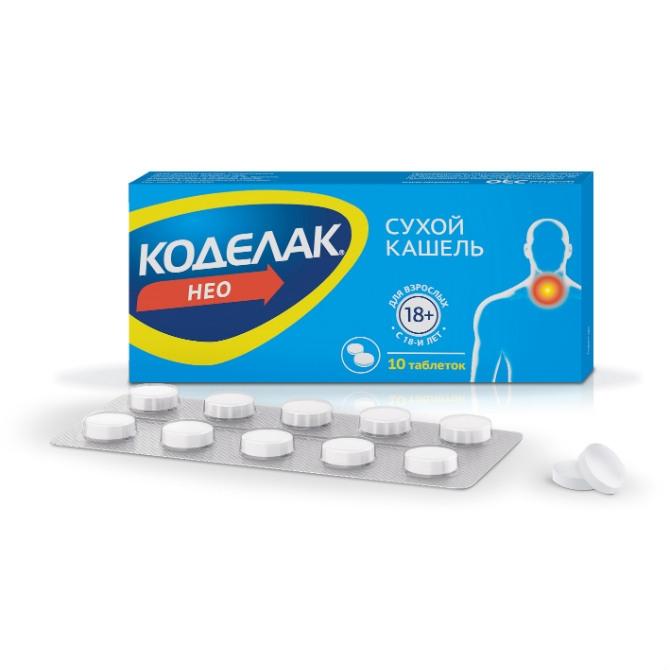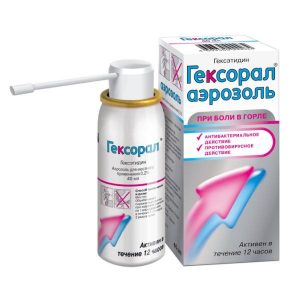Description
Release form
Tablets
Pharmacological action
Codelac Neo – antitussive, expectorant, bronchodilating, anti-inflammatory.
Pharmacodynamics
Antitussive non-opioid drug, has a direct effect on the cough center. Butamyrate citrate is neither chemically nor pharmacologically related to opium alkaloids. It has an antitussive, expectorant, moderate bronchodilating and anti-inflammatory effect, improves spirometry (reduces airway resistance) and blood oxygenation.
Pharmacokinetics
Drops for oral administration,
syrup Absorption. After oral administration, the drug is rapidly and completely absorbed from the digestive tract. After taking 150 mg of Cmax butamirate, the main metabolite (2-phenylbutyric acid) in the blood plasma is reached after about 1.5 hours and is 6.4 μg / ml.
Distribution and metabolism. The hydrolysis of butamirate, initially to 2-phenylbutyric acid and diethylaminoethoxyethanol, begins in the blood. These metabolites also have antitussive activity, and, like butamirate, to a large extent (about 95%) bind to plasma proteins, which causes their long-term T1 / 2. 2-phenylbutyric acid is partially metabolized by hydroxylation.
With repeated use of the drug, cumulation is not observed.
Withdrawal. T1 / 2 is 6 hours. All three metabolites are excreted mainly in the urine. Moreover, 2-phenylbutyric acid is mainly excreted in the form bound to glucuronic acid.
Film-modified coated tablets
Absorption is high. After ingestion of tablets with a modified release of Cmax in the plasma of the main metabolite (2-phenylbutyric acid) is observed after 9 hours and amounts to 1.4 μg / ml.
Hydrolysis of butamirate, initially to 2-phenylbutyric acid and diethylaminoethoxyethanol, begins in the blood. These metabolites also have antitussive activity, and, like butamirate, to a large extent (about 95%) bind to plasma proteins, which causes their long-term T1 / 2. 2-phenylbutyric acid is partially metabolized by hydroxylation. With repeated use of the drug, cumulation is not observed.
T1 / 2 butamirate – 13 hours. Metabolites are excreted mainly by the kidneys. Moreover, 2-phenylbutyric acid is mainly excreted in the form bound to glucuronic acid.
Indications
Dry cough of any etiology (for colds, flu, whooping cough and other conditions) suppression of cough in the preoperative and postoperative period, during surgical interventions and bronchoscopy.
Contraindications
hypersensitivity to the components of the drug
pregnancy (I trimester)
breastfeeding period
fructose intolerance (drops for oral administration, syrup)
lactose intolerance, mucosal lactose-free tablets, lactose-free absorption, )
children’s age up to 2 months (drops for oral administration), up to 3 years (syrup), up to 18 years (film-coated tablets with modified release).
Use during pregnancy and lactation
There is no data on the safety of the drug during pregnancy and its passage through the placental barrier.
The use of the drug in the first trimester of pregnancy is contraindicated. In the II and III trimesters of pregnancy, the use of the drug is possible taking into account the ratio of benefits for the mother and the potential risk to the fetus.
The penetration of the drug into breast milk has not been studied, therefore, the use of the drug during breastfeeding is not recommended.
Special instructions
There is a danger when using the drug in patients with a tendency to develop drug dependence, with liver diseases, alcoholism, epilepsy, and brain diseases.
Drops for oral administration, syrup. The drug can be used by patients with diabetes mellitus, because sucrose or glucose is not used as a sweetener.
film-coated tablets with a modified release. Each tablet contains 241 mg of lactose. The drug is contraindicated in patients with lactose intolerance, lactase deficiency, glucose-galactose malabsorption.
Influence on the ability to drive vehicles and work with mechanisms. It is recommended to refrain from driving vehicles and engaging in other potentially dangerous activities that require an increased concentration of attention and speed of psychomotor reactions, as the drug may cause drowsiness or dizziness.
Composition
Active substance:
butamirate citrate (in terms of 100% substance) 50 mg
Excipients:
lactose monohydrate (milk sugar) – 241 mg
hypromellose (K4M metocel) – 85 mg
talc – 4 mg
magnesium stearate – colloidal (aerosil) – 6 mg
povidone low molecular weight (polyvinylpyrrolidone low molecular weight) – 5 mg
Dosage and administration of
Without chewing. 1 tab. every 8 12 h.
Side effects
From the side of the central nervous system: dizziness, which occurs when you stop taking the drug or reduce the dose of drowsiness.
From the digestive system: nausea, vomiting, diarrhea.
From the skin: exanthema.
Allergic reactions: skin rash, itching.
Drug Interactions
No drug interactions for butamirate have been described. During the treatment with the drug, it is not recommended to drink alcoholic beverages, as well as drugs that depress the central nervous system (including sleeping pills, antipsychotics, tranquilizers).
Overdose
Symptoms: nausea, vomiting, drowsiness, diarrhea, abdominal pain, dizziness, irritability, decreased BP, impaired movement coordination.
Treatment: appointment of activated charcoal, gastric lavage, salt laxatives, symptomatic therapy (as indicated).
Storage Conditions
At a temperature not exceeding 25 ° C.
Shelf life
2 years
Deystvuyushtee substance
Butamirate
Dosage form prolonged
tablets.
Possible product names
Codelac Neo tablets with modif. exp. coated film 50 mg 10 pcs.
Pharmstandard-Ufavita, Russia




